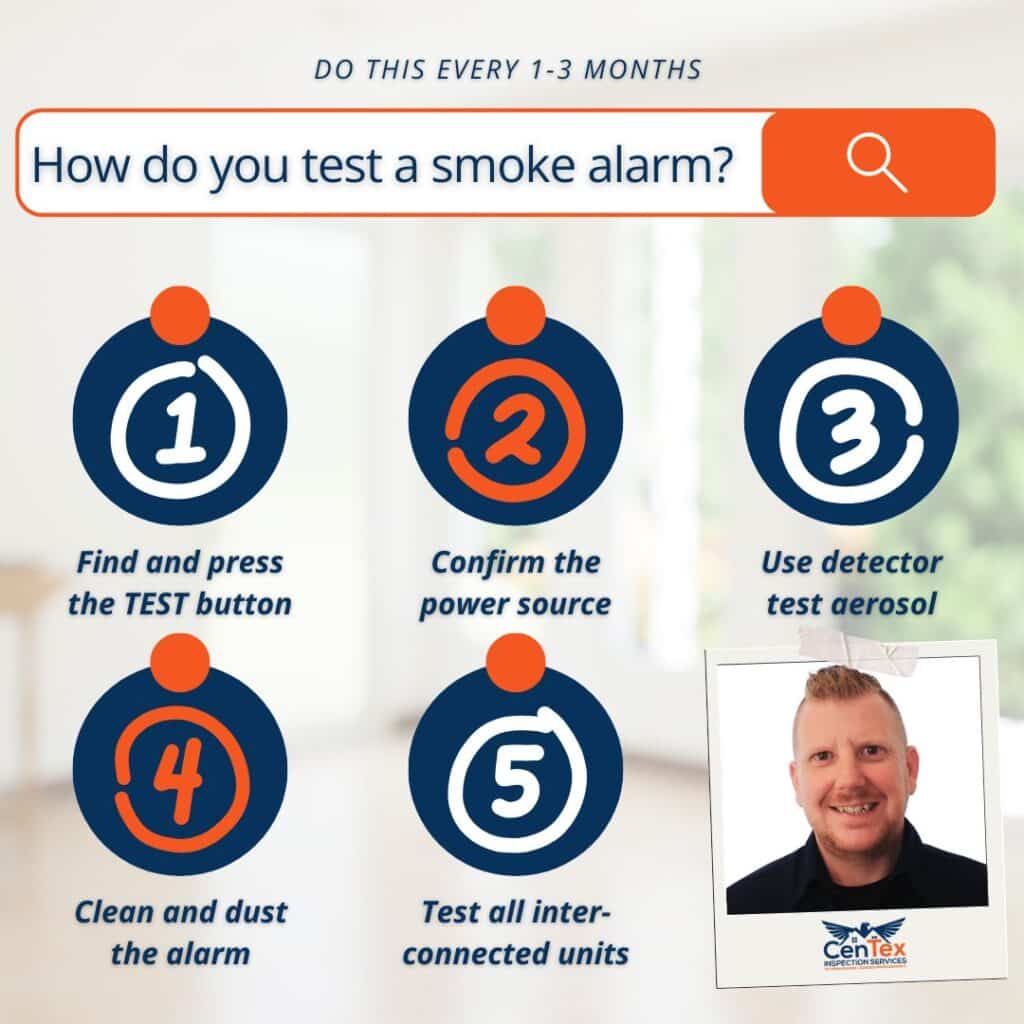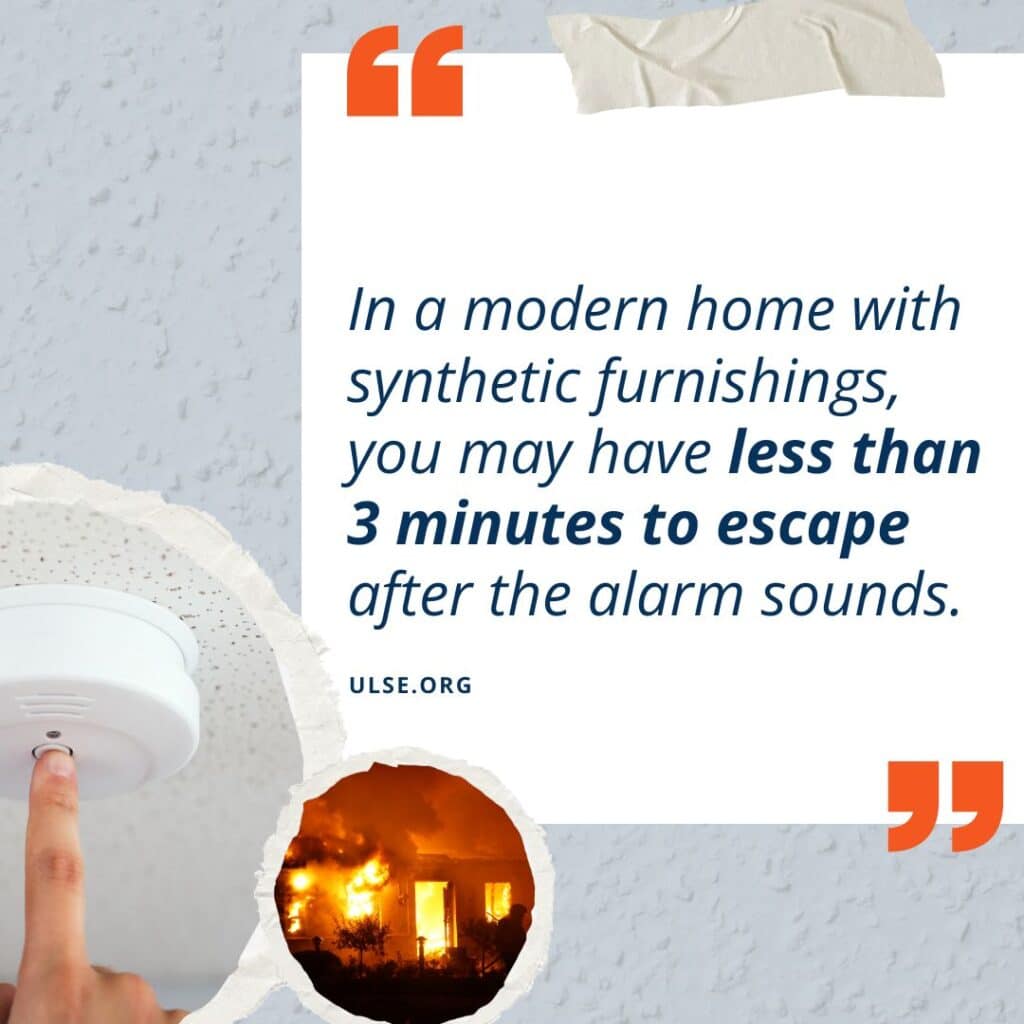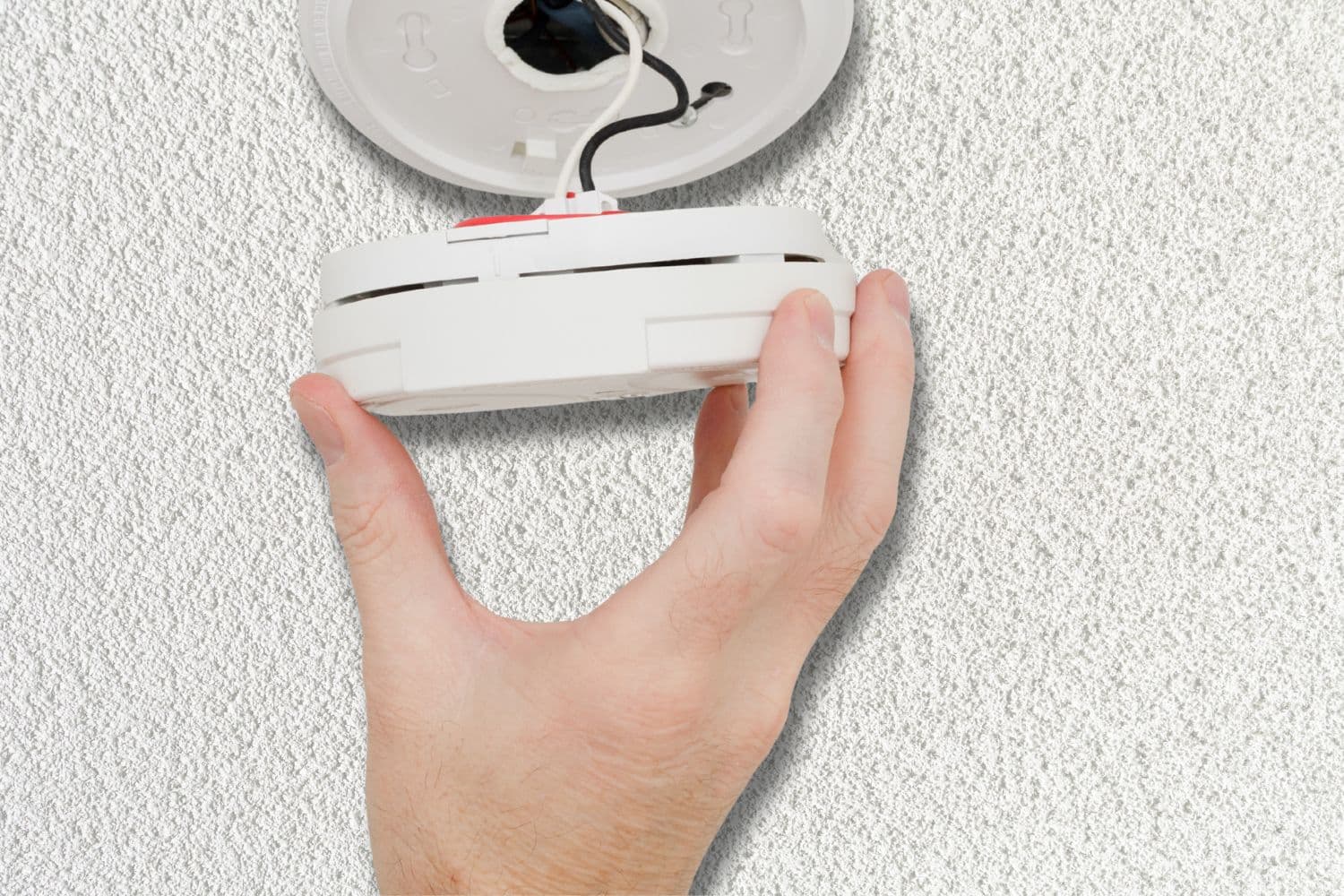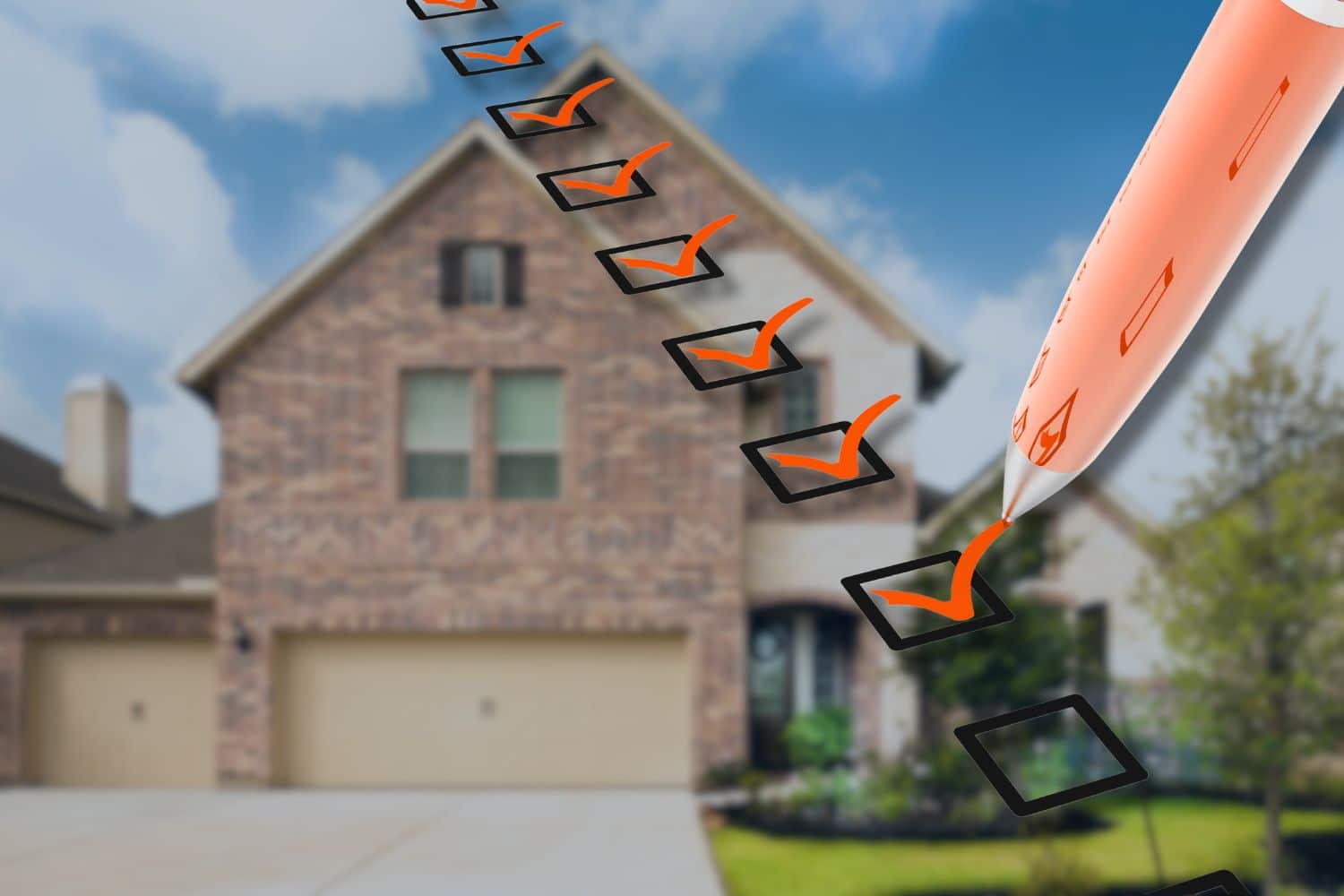A smoke alarm is one of the simplest, most affordable, and most effective safety devices in your home. But a smoke alarm that is not tested regularly is no guarantee of protection.
Batteries fail. Sensors get clogged with dust. Electronics can wear out over time. Almost three out of five home fire deaths happen in properties without working smoke alarms. In many of the homes, alarms were installed but failed due to dead batteries or expired sensors.
Testing your alarm takes just a few minutes and costs nothing, but it can make the difference between a safe escape and a devastating loss. This guide will walk you through exactly how to do it, where to place your alarms, and more.
Table of Contents
ToggleWhy Testing Your Smoke Alarm Matters
The NFPA reports that the death rate per 1,000 reported home fires is more than twice as high in homes without working smoke alarms compared to those with functioning alarms.
The CDC adds that residential fires cause between 2,000 and 3,000 fatalities each year in the United States, and tens of thousands more suffer injuries.
The most common reasons smoke alarms fail:
- Dead or missing batteries
- Dust, debris, or insects blocking the sensor
- Age-related failure after 10 years of use
- Improper installation or placement

Immediate benefits of a fire alarm test:
- Confirms the battery and circuitry are working
- Ensures the sensor can detect smoke
- Gives you an early warning before small problems turn into hazards
- Helps family members recognize the sound and know how to respond
Fire spreads faster than many people realize. In a modern home with synthetic furnishings, you may have less than 3 minutes to escape after the alarm sounds. Monthly testing ensures you do not waste precious seconds wondering if the alarm will work.
How to Test a Smoke Alarm the Right Way
Step 1: Locate and Press the Test Button
Find the test button, usually on the front or side of the alarm. Press and hold it until you hear a loud, steady sound. This test confirms that the horn and internal electronics are working.
If the alarm sounds weak or distorted, replace the battery. For sealed 10-year alarms, replace the entire unit. If there is no sound at all, the alarm is unsafe and should be replaced immediately.
Step 2: Confirm the Power Source
Different alarms have different power needs:
- Battery-powered alarms: Replace the battery every year, even if it has not chirped yet.
- Sealed 10-year battery alarms: Test monthly and replace the entire unit when it reaches the end of its lifespan.
- Hardwired alarms: Test monthly and replace the backup battery every year.
The U.S. Fire Administration (USFA) recommends testing all alarms monthly or quarterly, regardless of the power type.
Step 3: Use Smoke Detector Test Aerosol
Pressing the test button only checks the alarm’s electronics and horn. To confirm that the smoke sensor itself works, use a UL-listed smoke detector test aerosol. This spray simulates real smoke particles.
Follow the directions on the can, spraying from the recommended distance. The alarm should sound within seconds.
If it does not sound, clean the alarm, test again, and replace it if it still fails.
Step 4: Clean the Alarm
Sensors can be blocked by dust, pet hair, or insects, reducing their sensitivity. Vacuum the alarm’s vents with a soft brush attachment every six months. Wipe the exterior with a dry cloth.
Avoid using liquid cleaners, and do not paint the unit.
Step 5: Test All Interconnected Units
If your alarms are interconnected, pressing the test button on one unit should trigger all alarms in the home. This feature is especially important in multi-story homes, where a fire in one area may not be heard in another without an interconnected system.
Where to Place Smoke Alarms for Best Protection
Correct placement improves both detection speed and alarm audibility. According to the Consumer Product Safety Commission (CPSC), having both photoelectric and ionization alarms, or a dual-sensor model, provides the best coverage because each type detects different kinds of fires faster.
Where to install smoke alarms:
- On every level of your home, including the basement
- Inside each bedroom
- Outside sleeping areas, such as hallways leading to bedrooms
- Near, but not inside, kitchens to reduce nuisance alarms
- On the ceiling, when possible, at least 4 inches from walls; for wall mounting, place them 4–12 inches from the ceiling
For large or multi-story homes, consider interconnected alarms or wireless systems so all units sound together in an emergency.

How, Why, and When to Test Your Smoke Alarm
Instead of thinking of “how, why, and when” as separate lists, it helps to imagine them as a continuous safety habit. Here is how it works in practice:
Start with how. At least once a month, press and hold the test button on each alarm until you hear a loud, steady sound. A few times a year, go a step further and use smoke detector test aerosol to confirm the sensor can detect smoke particles.
This approach tests both the horn and the sensing element, giving you a complete picture of the alarm’s readiness. Keep track of these tests by adding a recurring reminder in your phone or marking them on a family safety calendar.
Understand why. Testing is your proof that the alarm will work when seconds matter. It prevents undetected battery drain, sensor blockage, and other failures that could leave you unprotected. Regular testing also gives everyone in the home a chance to hear the alarm and practice what to do if it sounds.
Follow a set schedule for when. Test every month without fail, right after any battery change, and after returning from an extended trip. Also, test following a power outage, electrical work, or any renovation that creates dust. If you hear an unexpected chirp or beep, test immediately to diagnose the issue.
Finally, replace every alarm at least every 10 years, even if it appears to be working, because sensors lose sensitivity with age.
When these three elements work together, testing becomes second nature. A quick monthly habit that dramatically reduces your risk.
Troubleshooting Smoke Alarm Issues
Chirping Every Minute?
- Cause: Low battery or end-of-life alert
- Solution: Replace the battery, or the unit if chirping continues after a fresh battery
Frequent False Alarms?
- Cause: Placement too close to kitchens, bathrooms, or HVAC vents; dust or insects inside
- Solution: Relocate the alarm a few feet farther away and clean it
No Sound During a Test?
- Cause: Dead battery, faulty horn, or damaged electronics
- Solution: Replace the battery first; if silent, replace the alarm immediately
Other Home Safety Questions to Consider
Do I Also Need Carbon Monoxide Alarms?
Yes, if you have fuel-burning appliances, a fireplace, or an attached garage. Place one outside each sleeping area and on every level. Test monthly like your smoke alarms.
Which Type of Smoke Alarm Is Best?
Photoelectric alarms respond faster to smoldering fires, while ionization alarms react quicker to fast-flaming fires. Using both types or a dual-sensor model offers the best protection.
How Many Alarms Does My Home Need?
At minimum, one per level, plus one inside every bedroom and one outside sleeping areas. Larger homes may require more for complete coverage.
When to Call a Professional
If you’re unsure whether your smoke alarms are installed correctly, covering the right areas, or still within their effective lifespan, a professional home inspection can help.
Centex can evaluate your current alarms, check placement and functionality, and identify any gaps in protection. We also look for related safety issues (such as outdated wiring, poor ventilation, or hidden fire hazards) that could affect your home’s overall safety.
You should get in touch with a licensed electrician or qualified alarm technician if…
- Hardwired alarms fail testing
- Interconnected alarms are not triggering together
- You want to install or upgrade to a smart alarm system
- You suspect damage after a fire or electrical issue
Conclusion
Testing your smoke alarm is a small task with a huge payoff. Just a few minutes each month can help ensure your alarm will work when you need it most. Set a monthly reminder, follow the schedule in this guide, and keep your family safe.
If you are unsure about your alarm placement, coverage, or condition, schedule a professional home inspection with Centex Inspection Services. We can review your current setup, recommend improvements, and make sure your home is ready for any emergency.




